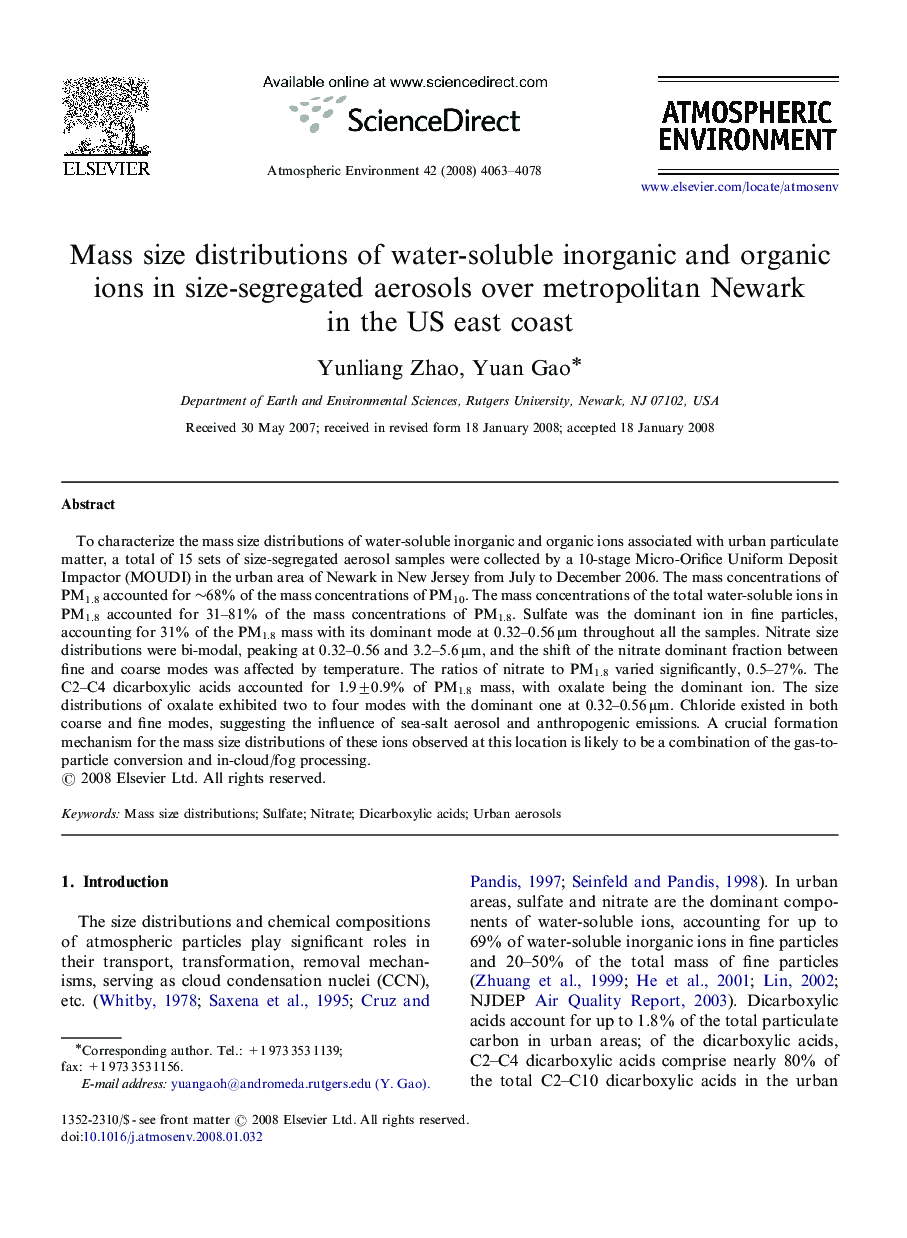| Article ID | Journal | Published Year | Pages | File Type |
|---|---|---|---|---|
| 4442902 | Atmospheric Environment | 2008 | 16 Pages |
To characterize the mass size distributions of water-soluble inorganic and organic ions associated with urban particulate matter, a total of 15 sets of size-segregated aerosol samples were collected by a 10-stage Micro-Orifice Uniform Deposit Impactor (MOUDI) in the urban area of Newark in New Jersey from July to December 2006. The mass concentrations of PM1.8 accounted for ∼68% of the mass concentrations of PM10. The mass concentrations of the total water-soluble ions in PM1.8 accounted for 31–81% of the mass concentrations of PM1.8. Sulfate was the dominant ion in fine particles, accounting for 31% of the PM1.8 mass with its dominant mode at 0.32–0.56 μm throughout all the samples. Nitrate size distributions were bi-modal, peaking at 0.32–0.56 and 3.2–5.6 μm, and the shift of the nitrate dominant fraction between fine and coarse modes was affected by temperature. The ratios of nitrate to PM1.8 varied significantly, 0.5–27%. The C2–C4 dicarboxylic acids accounted for 1.9±0.9% of PM1.8 mass, with oxalate being the dominant ion. The size distributions of oxalate exhibited two to four modes with the dominant one at 0.32–0.56 μm. Chloride existed in both coarse and fine modes, suggesting the influence of sea-salt aerosol and anthropogenic emissions. A crucial formation mechanism for the mass size distributions of these ions observed at this location is likely to be a combination of the gas-to-particle conversion and in-cloud/fog processing.
